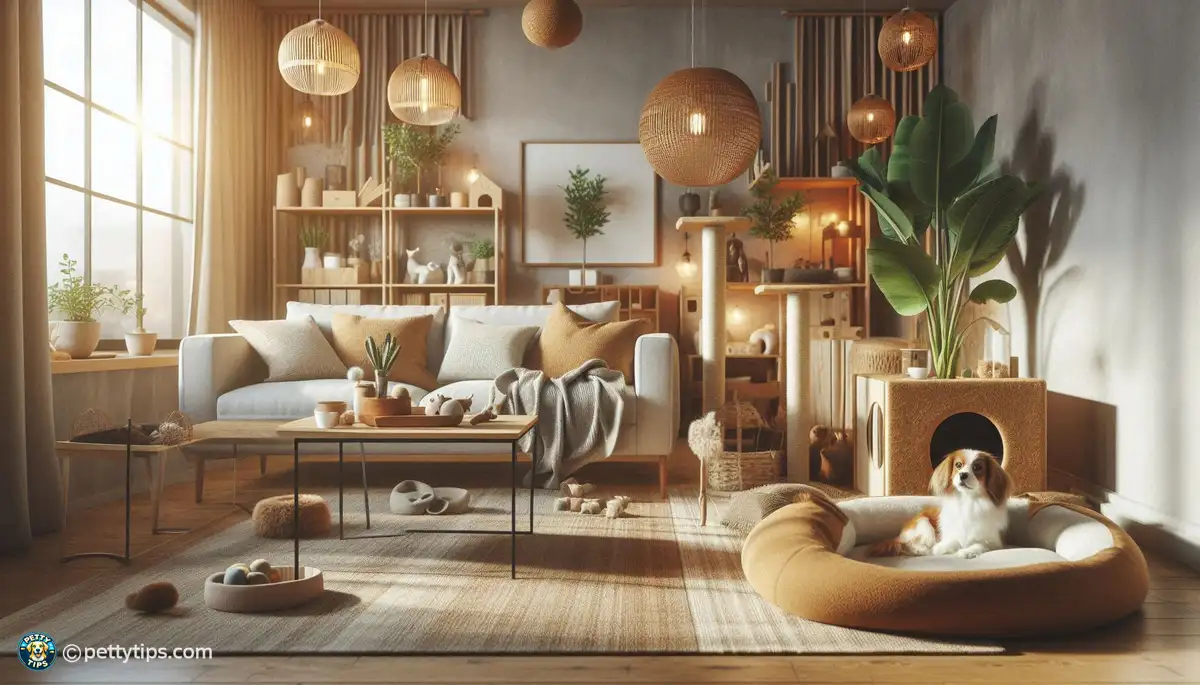
Questions to Ask Before Adopting a Pet
Sandra Vega - Sep 17, 2024 - 7 min read


When designing a pet-friendly home, it's crucial to start with a deep understanding of your pet's behavior. Each pet has unique habits and preferences that influence how they interact with furniture and décor. For example, if you have a cat, you'll need to consider their love for climbing and scratching. Dogs may enjoy cozy corners or spaces where they can look out the window. Understanding these behaviors helps you tailor your home to create a comfortable environment for your furry friend.
Safety should be a top priority when choosing furniture and décor for a pet-friendly home. Certain materials and designs can pose hazards to pets. For instance, sharp edges or delicate items may not be suitable if you have a rambunctious pet. Materials that are easy to clean and maintain are also important, as pets can sometimes create messes. By assessing these safety concerns, you can make informed decisions that enhance both your pet's safety and your home's functionality.
Pets thrive when they have designated spaces that cater to their needs. Whether it's a cozy bed for napping, a scratching post for cats, or a window perch for bird-watching, these spaces provide comfort and enrichment. When incorporating furniture and décor, consider how these elements can be integrated into your pet's daily routine. By creating comfortable spaces, you not only enhance your pet's well-being but also strengthen the bond between you and your furry companion.
Accessibility is key to ensuring your pet feels welcome and at ease in your home. This includes choosing furniture and décor that accommodates your pet's size, mobility, and habits. For example, low-profile furniture is easier for small dogs or older pets to access, while sturdy shelves or cat trees cater to a cat's natural climbing instincts. By enhancing accessibility, you create an environment where your pet can move freely and safely throughout the space.
When selecting furniture for a pet-friendly home, durability is paramount. Pets can inadvertently cause wear and tear, so choosing materials that can withstand their activities is essential. Look for fabrics such as microfiber or leather that are scratch-resistant and easy to clean. Avoid delicate materials that may tear easily or retain odors. Investing in durable furniture ensures longevity and reduces the need for frequent replacements, making it a practical choice for pet owners.
Pets can occasionally have accidents or track dirt indoors, making stain-resistant fabrics a wise choice. Fabrics treated with stain-resistant coatings or those inherently resistant to stains, such as certain types of synthetic fibers, are ideal. These fabrics are easier to clean and maintain, allowing you to promptly address any spills or messes without worry. By choosing stain-resistant fabrics, you can maintain the aesthetic appeal of your furniture while accommodating your pet's presence in your home.
For added convenience and versatility, consider furniture with washable covers. Removable covers allow you to easily clean pet hair, dirt, or stains, keeping your furniture looking fresh and inviting. Many pet-friendly covers are designed to be machine washable, saving you time and effort in maintenance. This option is particularly beneficial for larger furniture pieces such as sofas or armchairs where frequent cleaning may be necessary. By opting for washable covers, you can maintain a clean and hygienic environment for both you and your pet.
Comfort is essential when choosing furniture that accommodates pets. Look for pieces that provide ample cushioning and support, ensuring your pet has a cozy place to relax. Features such as orthopedic beds for dogs or padded perches for cats cater to their specific comfort needs. Additionally, consider furniture designs that offer stability and security, particularly for older pets or those with mobility issues. By prioritizing comfort and support, you create inviting spaces that your pet will naturally gravitate towards.
Adding greenery to your home can enhance its aesthetics and create a calming environment for both you and your pet. When selecting indoor plants, it's essential to choose varieties that are safe for pets. Some common pet-friendly plants include spider plants, Boston ferns, and African violets. Avoid plants that are toxic to pets, such as lilies or philodendrons, which can pose a danger if ingested. By incorporating pet-safe plants, you can enjoy the beauty of nature without compromising your pet's well-being.
Rugs can add warmth and style to your home while also serving practical purposes for pets. Opt for rugs that are durable and easy to clean, such as those made from natural fibers like wool or sisal. These materials are more resistant to stains and wear, making them suitable for high-traffic areas where pets frequent. Additionally, choose rugs with low-pile or flat-weave designs that are less likely to trap pet hair or dirt. By selecting pet-friendly rugs, you can maintain a tidy living space while providing a comfortable surface for your pet to walk, play, or rest.
Maintaining a tidy and organized home is easier when you have dedicated storage solutions for pet supplies. Consider incorporating baskets, bins, or cabinets specifically for storing pet toys, treats, leashes, and grooming tools. These storage solutions not only keep your home clutter-free but also ensure that essential items are easily accessible when needed. Choose storage containers that complement your décor style and blend seamlessly into your living space. By organizing pet supplies, you create a functional and harmonious environment that accommodates both you and your pet's needs.
Personalizing your home with artwork that celebrates your love for pets can add a unique touch to your décor. Look for paintings, prints, or photographs featuring animals or pet-related themes that resonate with you. Consider incorporating artwork that reflects your pet's personality or showcases special moments you've shared together. Framed photographs of your pet or custom portraits can also create a heartfelt display that honors your furry companion. By decorating with pet-friendly artwork, you infuse your home with warmth and personality while honoring the bond you share with your pet.
Regular cleaning is essential for maintaining a pet-friendly home that is both hygienic and aesthetically pleasing. Establishing cleaning routines helps manage pet hair, dirt, and odors effectively. Use vacuum cleaners equipped with pet-specific attachments to remove hair from furniture, carpets, and rugs. Consider using pet-safe cleaning products to sanitize surfaces without exposing your pet to harmful chemicals. By incorporating regular cleaning into your routine, you can uphold a clean and healthy environment for both you and your pet.
Periodically inspecting furniture, décor, and other household items helps identify any wear and tear caused by pets. Check furniture for scratches, loose seams, or worn-out covers that may need repair or replacement. Inspect rugs for signs of damage or stains that require cleaning. By conducting regular inspections, you can address maintenance issues promptly and prevent minor problems from becoming more significant concerns. This proactive approach ensures that your home remains pet-friendly and well-maintained over time.
behavioral training plays a crucial role in fostering a harmonious relationship between pets and their surroundings. Train pets to use designated areas for scratching, sleeping, and playing to minimize damage to furniture and décor. Use positive reinforcement techniques such as treats or praise to encourage desirable behaviors. Address any behavioral challenges promptly and consistently to prevent them from becoming ingrained habits. By implementing behavioral training, you promote a respectful environment where pets understand boundaries and coexist peacefully with your home décor.
When in doubt about specific furniture choices or décor considerations, consulting with veterinarians or pet experts can provide valuable insights. These professionals can offer recommendations based on your pet's breed, age, and individual needs. They can also advise on pet-safe materials, environmental enrichment strategies, and health considerations related to home design. By seeking expert guidance, you can make informed decisions that prioritize your pet's well-being while enhancing your home's functionality and style.
Incorporating pet-friendly furniture and décor into your home is a rewarding endeavor that enhances both your living space and your pet's quality of life. By understanding your pet's needs, choosing appropriate furniture and décor, and maintaining a clean and safe environment, you create a harmonious atmosphere where pets and people can thrive together. Whether you're selecting durable fabrics, organizing pet supplies, or integrating pet-friendly artwork, each decision contributes to a home that celebrates the joy of pet ownership. With careful planning and consideration, you can create a space that reflects your personal style while prioritizing the comfort and happiness of your beloved pets.